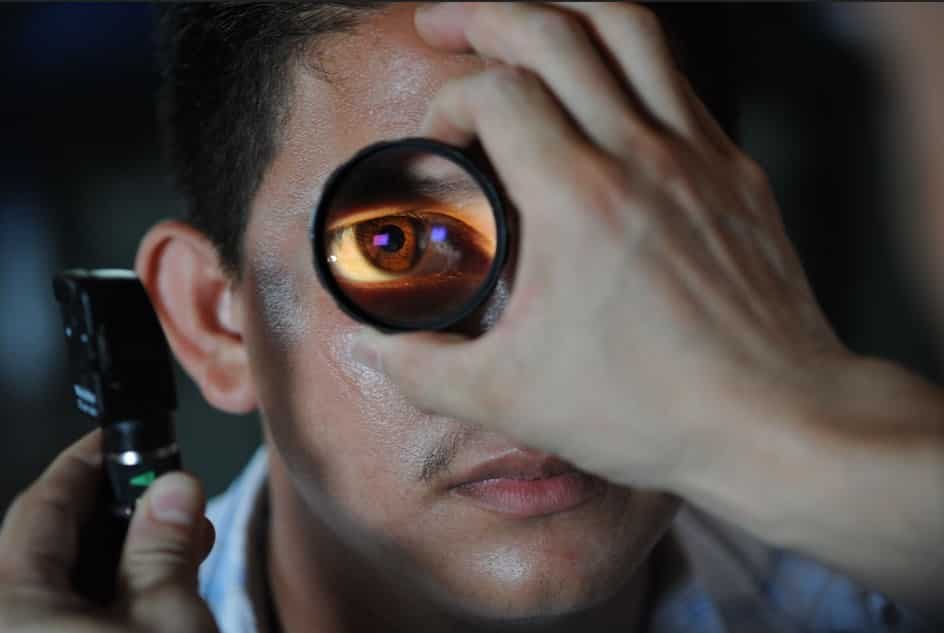Discuss Common Age-Related Eye Problems And Solutions With Optometrist Near Bloomingdale.
Age-related eye problems happen to lots of people as they grow older. But vision changes aren’t something you should simply overlook as normal. Some problems stem from the novel or worsening vision disorders. As you grow older, these may happen steadily, says Optometrist near Bloomingdale. Others happen unexpectedly, speedily causing blindness. That is why habitual exams with an eye doctor are so imperative. As people get aged, they’re at superior risk for common eye conditions and diseases, including age-related macular degeneration (AMD), cataracts, and glaucoma.
Lots of eye diseases have no early symptoms. But the excellent news is that standard all-inclusive dilated eye exams can assist adults age 50 and older to defend their vision by catching eye conditions and diseases early when they’re easier to treat. You can take some beneficial steps to lower your risk of age-related eyesight problems. Or, if you have changed, you can slow their development. By age 65, one in three Americans is dealing with some type of vision-weakening eye condition. Learning about the symptoms and treatments for each eye condition can assist you in protecting your vision and that of an aging loved one.
Here are some common age-related eye problems defined by Bloomingdale Optometrist:
-
Age-related Macular Degeneration (AMD):
Age-related macular degeneration mainly affects the macula, a small portion found at the center of the retina and accountable for sharp central vision. If you have AMD, you will have trouble performing detail-leaning tasks for example driving, reading, writing, and recognizing different shades of colors. Fuzzy, Indistinct, or shadowy central vision is an early symptom of AMD. In a main medical study called The Age-Related Eye Disease Study (AREDS) done by the National Eye Institute (NEI), four factors stood out in rising risk of AMD:
- Age
- Family heritage
- Smoking
- Race (Caucasian)
AMD comes in two forms, dry and wet. Each type needs diverse kinds of treatment approaches. It’s probable to identify early signs of AMD and decelerate its development through an all-inclusive retinal exam.
-
Diabetic Eye Disease:
Moreover known as diabetic retinopathy, diabetic eye diseases come to pass due to injuring of the blood vessels in the retina among diabetics. As a consequence, the blood vessels will bleed or leak fluid. If left abandoned, this can cause everlasting vision loss. Nerve damage affecting muscles that manage eye movements may be present, as well. Symptoms may comprise double vision and spontaneous eye movements. If you have an early-stage diabetic eye disease, you will be inquired to control your blood sugar and cholesterol levels. Higher stages entail laser treatment and vasectomy surgical procedures.
-
Low Vision:
People with eye disease symptoms because of advancing age are more probable to have low vision. This condition makes everyday tasks complicated and difficult for the reason that even contact lenses, wearing glasses, and medications cannot decrease low vision symptoms.
People with low vision can live better lives and work all right with treatment options suggested by Bloomingdale Optometrist, which are:

- Biotic telescopes
- Digital desktop magnifiers
- Lighted handheld magnifiers
- Software with text-to-speech and magnification features
- Spectacle-mounted magnifiers
-
Dry Eye Syndrome:
Dry eye syndrome is a consequence of a chronic lack of enough moisture (mucus, oil, or water) on the eye’s surface. This shortage of lubrication and moisture is sometimes an outcome of insufficient production of tears, or deprived tear quality. Underlying causes and symptoms of dry eye syndrome can be different. The following are the most common symptoms:
- Blurred vision
- Burning sensation
- Gritty or sandy feeling in the eye
- Sore eyes
- Watery eyes due to excessive tearing
Dry eye management and treatment options comprise eye drops that grant relief, medications to decrease swelling, dietary changes, lid hygiene, and in-office measures.
-
Glaucoma:
Glaucoma is a communal term for a group of interrelated eye disorders that damages the optic nerve, accountable for transmitting information from the eye to the brain. Glaucoma can be whichever of narrow-angle or open-angle. Frequently, open-angle glaucoma has no symptoms and vision stays standard. Most glaucoma cases entail higher-than-normal pressure levels within the eye resulting in tangential vision loss. Trouble seeing in weak light and difficulties navigating while walking is overdue symptoms of tangential vision loss.
Glaucoma is identified through an all-inclusive dilated exam. Treatment is regularly intended at reducing the quantity of fluid produced by the eye or increasing the sum of fluid that exhausts from the eye. Glaucoma surgery may be suggested to boost drainage flow. In addition to aging, glaucoma risk is high between African-Americans and people with a family narration of glaucoma.
If you are dealing with any kind of eyesight problem, you should immediately contact an Optometrist near Bloomingdale.

